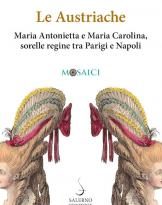John P. Cann
Ed. Il Maglio
pp. 352
Portugal, the first colonial empire in the world and the last to abandon its colonies, was engaged, from 1961 to 1974, in a difficult and long counter-insurgency campaign in Africa, to eradicate guerrillas and terrorists who attacked the integrity of the state, inextricably constituted from the national territory (Metropolis) and overseas territories (Overseas). An armed conflict that lasted 13 years and was conducted in distant Overseas Territories, in vast and diverse operating theaters: Angola (1961 -1974), Guinea-Bissau (1963-1974) and Mozambique (1964-1974).
To the history of this conflict, John P. Cann, professor at Marine Corps University of Quantico in Virginia and former pilot officer of the US Navy, dedicated the beautiful volume, previously unpublished in Italy, entitled Portugal in the overseas wars. Operational doctrine and operations in Africa 1961-1974 (which substantially repeats his PhD thesis in war studies, obtained in 1966 at the King’s College of London), making use, for the first time, of archival and documentary material, and, mainly, of extensive interviews made by the protagonists of those events.
The work carefully reconstructs the military facts that characterized the Portuguese approach to the counter-insurgency, analyzing a tactically winning but little known military experience, because it was overshadowed by the contemporary Vietnam War, in which a world superpower like the United States was directly involved .
Diplomatically isolated, endowed with scarce economic resources, with a small and unprepared army, Portugal succeeded in the "extraordinary feat" of defeating national liberation movements on a military level, which counted on the political, economic and military support of the communist bloc: Soviet Union , China and Cuba; as well as "sanctuaries" in sub-Saharan Africa.
The Portuguese army in a few years was able not only to make an "impressive logistical effort", but also to develop in the early years of the conflict its own original counter-insurgency doctrine, starting from the lessons drawn from the experiences of the British and French, who had fought similar conflicts in Malaysia and Algeria almost in the same years.
Cann recalls that in the late 50s selected groups of young officers of the Portuguese armed forces had attended courses on psychological warfare at the Maresfield Park Camp Intelligence Center of the British Army in Sussex in Great Britain and those on the Revolutionary War at the French Army Pacification and Counter Guerrilla Education Center in Arzew, near Oran, Algeria. In addition, some Portuguese officers had been present on the field following the French forces in Algeria.
As a first result of these visits, we can consider, at the level of strategic reflections, the five conferences on the theme of subversive war given by Colonel Hermes de Arajύo Oliveira at the Military Academy of Lisbon in 1959, then published in 1960 under the title War Revolucionária, by the Ministry of the Army.
This interest of the Portuguese military for the counter-insurgency war will evolve in the elaboration of a doctrine of employment which will be codified in the five volumes of the manual O Exército na Subversive War. (The Army in the Subversive War), written by Lieutenant Colonel Artur Henrique Nunes da Silva - former student of the course on Subversive War at the Higher School of War in Paris from 1958 to 1960 - and by his collaborators, published in 1963, edited by of the Army Staff. A fundamental text that, in the 60s, enabled the Portuguese to have a consolidated doctrine to plan a military counter-insurgency campaign, unlike the French and the British who, in the 50s, found themselves unprepared to address this new type of conflict.
Cann, in a timely manner, shows that there was an original "Portuguese method" to the counter-insurgency, based on the national strategy of combining on the one hand the containment of the cost of the war and, on the other, to distribute the burden on the colonies in based on the tactical needs of the operating theater. The Portuguese General Staff, in fact, was well aware of having to conduct a low intensity and long duration campaign with limited financial resources.
The Portuguese counter-insurgency doctrine favored a population-centric approach rather than the enemy-centric approach, to say it with Australian military analyst David Kilcullen, according to dictates of the subversive war manual which stated:"The solution of insurrectional conflicts can never be achieved only by armed force."
The counter-insurgency required a holistic approach. Consequently, the military repression was accompanied by a vast program of political, economic, social and administrative reforms, with a view to a policy of integration of Native Africans aimed at conquering "their hearts and minds". Hospitals, schools, aqueducts and road infrastructures were therefore built. Access to education extended to the local population.
The indigenous population was also preserved from contact with the guerrillas, both to protect it and to prevent it from supporting the guerrillas. To this end, following the example of what was achieved in Malaysia by the British and the French in Algeria, the Portuguese carried out a large program of resettlement of the population in strategic villages specially built and placed under the control of the army, Aldeamentos, which offered residents improved living conditions, jobs and safety.
If this approach aimed at gaining the trust and loyalty of the population was affected by the influence of the British and French experience, the Portuguese approach on the level of military tactics was much more original.
The Portuguese General Staff implemented a radical transformation of an army trained for a conventional war into an army ready to face an unconventional war. And this was an "only Portuguese" approach. A transformation in contrast to the structure of the American armed forces in Vietnam, the British in Malaysia and the French ones, initially, in Algeria. In fact, all these forces began to fight insurrections as conventional forces.
This approach involved not only an adaptation in operational methods, but also the restructuring of forces, which were divided into small light infantry units. Elite forces for special operations were also created, commands (command) e special fuzileros (fusiliers) of the Navy. They strengthened tropas para-quesistas (paratroopers), which were assigned to the Air Force, as a rapid reaction force to be deployed quickly wherever the need arose. Special hunter units were formed, special caçadores. A special role among the special operations forces was played by the Arrows (Arrows), formed by the Bushmen and managed by the PIDE (Polícia Internacional and de Defesa do Estado), which showed an extraordinary fighting ability in extreme environments.
For the transport and use of special forces, the helicopter was used, which allowed the approach to the objective with a low-level flight on the ground which, shielding the noise, allowed to take the enemy by surprise. An effective tactic, already widely tested by the French in Algeria.
Another element that characterized the Portuguese approach to counter-insurgency was the considerable "Africanization" of its armed forces, that is, the recruitment policy of indigenous troops. A recruitment that expanded the pool of human resources to be enrolled and reduced the costs of training, and of transportation from the motherland to the colonies. The Africans who served in the armed forces reached 40% of the total force. Thus, although the use of indigenous forces in counterinsurgency wars was not a Portuguese specificity, in no previous conflict had they been employed in such high percentages. Neither by the French first in Indochina and then in Algeria, nor by the Americans in Vietnam.
Furthermore, a great boost was given to propaganda and psychological operations (PSYOPs). A network of was also implemented intelligence, which was substantially forced to resort to the collection of information through personal contacts (HUMINT), given that the conditions of technological underdevelopment of the context in which it operated made SIGINT inapplicable. At the beginning of the conflict, the insurgents did not even have simple radio transceivers!
The operational strategy implemented by the Portuguese in the 13 years of the conflict inOverseas it was undoubtedly a winner. In 1974, Angola was practically pacified, Guinea was in a stalemate and the small-scale conflict in Monzambique was effectively under control.
The Portuguese armed forces had not suffered any military defeat to that date. The defeat was political.
A bloodless coup, the so-called "Carnation Revolution" (Carnation Revolution) of 25 April 1974, implemented by the lower officers (Movement dos Capitães) of the Portuguese Armed Forces conquered by Marxist ideology, overthrew the authoritarian regime of "Estado Novo " Salazar and put an end, in a few months, to the colonial conflict.
A really interesting and well documented book, Cann's, which gives us the story of an otherwise unknown conflict, which ended about half a century ago, but whose knowledge allows us to better understand the complex dynamics of armed conflicts, so-called asymmetric, that today many areas of the world are still bleeding, from Afghanistan to Syria, from Libya to Somalia.
Nicola Festa












